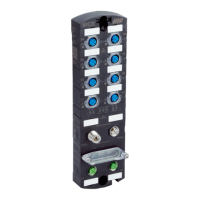OPC 10000-100: OPC Unified Architecture
Part 100: Devices
Release 1.03.1
2021-12-07
https://reference.opcfoundation.org/DI/docs/
In addition, the IO-Link Companion specification is implemented with the exception that
all functionality related to the IODD is not supported by the SIG350.
OPC 30120: OPC Unified Architecture for IO-Link
IO-Link: OPC Unified Architecture
Release 1.0
2018-12-01
https://reference.opcfoundation.org/IOLink/docs/
Basically, device access in OPC UA is done via objects and thus follow an object-ori‐
ented approach. Parts of an object can be variables, methods or events. The structure
and content of objects are each described by corresponding data types, which are
defined either specific to profiles or devices. Objects can be derived from several
base classes and inherit the corresponding properties in the form of attributes and
references.
•
Attributes provide information about the object and essentially enable access to
the payload.
•
References describe the hierarchical arrangement of the object in the device
model and the relationship to other objects.
All object data types are derived from the UANode base class and thus have properties
(attributes) that enable access in the OPC UA address space via “nodes”. For example,
the “NodeId” attribute can be used to access the instance of individual objects, since
this allows them to be uniquely identified, see "Access to process data", page 60.
More information and a detailed, comprehensive description of OPC UA can be found at
https://reference.opcfoundation.org/.
8.2.3.2 Commissioning with UA Expert
Figure 12: UA Expert
OPERATION 8
8027834./2022-06-10 | SICK O P E R A T I N G I N S T R U C T I O N S | Sensor Integration Gateway - SIG350
53
Subject to change without notice

